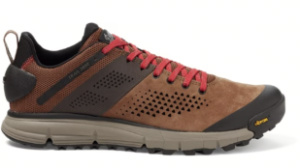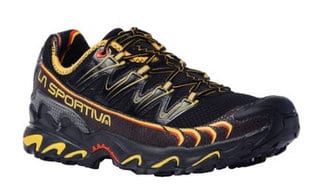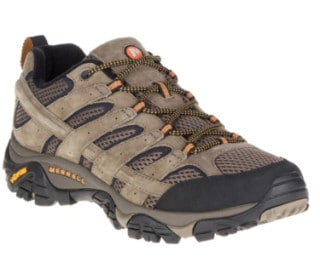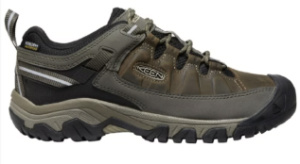
Hiking footwear and path runners are the most well-liked footwear utilized by hikers and backpackers as we speak. The largest distinction between the 2 is that mountaineering footwear, which are usually heavier and extra sturdy, can solely be used for strolling whereas path runners can be utilized for strolling and operating. Given their reputation amongst hikers, it is sensible to listing them collectively, so you’ll be able to weigh their professionals and cons.
Preferences differ broadly, nevertheless, and a few hikers like waterproof footwear, ones with thick cushioning, extra sturdy mountaineering footwear, or ultralight mesh path runners that dry quickly after they get moist. Regardless of your preferences, it’s necessary to decide on footwear that matches properly and is acceptable for the situations you intend to hike in, particularly when it comes to temperature, terrain issue, and the burden of the masses you anticipate to hold.
Here are the ten greatest mountaineering footwear and path runners that we suggest.
1. Danner Trail 2650 GTX Hiking Shoes
2. Altra Lone Peak 7 Trail Runners

- Type: Trail Runner
- Cushion: Medium
- Drop: 0 mm
- Wide Sizes: Yes
- Durability: Average
The Altra Lone Peak 7 is the most well-liked path operating shoe utilized by thru-hikers by a large margin. Noted for its roomy toe field, splayed forefoot, and built-in tongue, the reasonably cushioned Lone Peak has mesh uppers for enhanced breathability and drainage. This zero-drop shoe has a toothy lugged sole that gives good traction, with an built-in rock guard that provides enhanced forefoot safety. An modern gaiter entice on the rear of the shoe holds your gaiters in place. Durability could be so-so should you hike in rocky terrain which abrades the shoe’s mesh outers, and sand might leak inside in desert terrain. If you’ve by no means worn a zero-drop shoe earlier than, they take a while…on the order 4-6 weeks to acclimate to as they alter your stride and may put pressure in your calf muscle groups and Achilles tendon.
3. HOKA ONE ONE Anacapa Low GTX Hiking Shoe

- Type: Hiking Shoe
- Cushion: High
- Drop: 6 mm
- Wide Sizes: Available
- Durability: Excellent
The Anacapa Low GTX is a mountaineering shoe that mixes the improved sturdiness of a mountaineering shoe with the efficiency of a path runner. Waterproof, low-profile, grippy, and light-weight, their nubuck leather-based outers and Gore-Tex lining present enhanced sturdiness and moisture safety. Compression-molded EVA midsoles present a balanced, cushioned, and secure journey that resists ankle rolling whereas their prolonged heel geometry and enhanced entrance rocker permit for smoother heel-to-toe transitions and simpler push-off. The Anacapa Low GTX has Vibram Megagrip soles and 5 mm lugs that present good traction on exhausting dry surfaces however is usually a little sloppy for severe scrambling and edging. The sturdiness of those footwear is sort of good, nevertheless, as a result of their nubuck leather-based outers which ought to hold them on the path for a number of seasons.
4. La Sportiva Ultra Raptor II Trail Runner
5. Merrell Moab 3 Hiking Shoes
6. Hoka ONE ONE Speedgoat 5 Trail Runner

- Type: Trail Runner
- Cushion: Maximum
- Drop: 4 mm
- Wide Sizes: Available
- Durability: Average
7. Salomon X Ultra 4 GORE-TEX Hiking Shoes

- Type: Hiking Shoe
- Cushion: Moderate
- Drop: 11 mm
- Wide Sizes: Available
- Durability: Excellent
The Salomon X Ultra 4 Gore-Tex footwear are rugged footwear that can be utilized for day hikes and backpacking journeys throughout a variety of terrain. They draw on Salomon’s trail-running experience and share most of the properties and parts of its nimbler path runners, together with the grippy ContraGrip outsole, the ADV-C assist chassis, and the shoe’s distinctive fast lace system which you don’t tie however pull to tighten. While properly constructed and envisioned, you’re both to like the X Ultra 4 or hate it as a result of it’s a reasonably stiff shoe with an inner shank, a deep heel cup than can irritate your ankles and since the fast lace system makes it troublesome to switch the stress of the laces in numerous spots alongside the highest of the shoe. On the flip facet, the X Ultra 4 is a light-weight mountaineering shoe with a roomy toe field, wonderful traction, and good assist. Try them: you would possibly actually like them.
8. Brooks Cascadia 16 Trail Runner
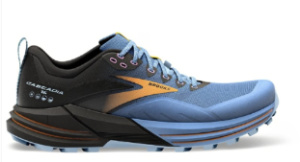
- Type: Trail Runner
- Cushion: Medium
- Drop: 8 mm
- Wide Sizes: Available
- Durability: Very Good
Now in its sixteenth iteration, the Brooks Cascadia 16 is an extremely refined path runner loaded with options that path runners and hikers will discover helpful. Combining cushioning with safety, channels within the midsoles and outsole building let the footwear mould simply to the bottom, enhancing a secure journey. A ballistic rock plate protects in opposition to pebbles and uneven terrain and the gusseted tongue retains out sand and small particles. The footwear have a heel gaiter tab and a lace keeper so laces don’t untie when underway. Synthetic inlays on the entrance and alongside the facet assist shield the shoe’s exterior mesh from abrasion whereas drainage ports assist evacuate water shortly. Deeply lugged are made with a sticky rubber gives wonderful grip on each moist and dry surfaces. The Cascadia 16 is a superb all-rounder that works in nearly any terrain, offering secure consolation and traction.
9. KEEN Targhee III Waterproof Low Hiking Shoes
- Type: Hiking Shoes
- Cushion: Medium
- Drop: 8-10 mm
- Wide Sizes: Yes (Amazon)
- Durability: Excellent
10. Topo Athletic Terraventure 3 Trail Runners

- Type: Trail Runner
- Cushion: Medium
- Drop: 3 mm
- Wide Sizes: No
- Durability: Average
How To Choose Hiking Shoes and Trail Runners
There’s plenty of selection accessible in terms of mountaineering footwear and advert individuals have a variety of non-public preferences. This is why we extremely suggest that you just attempt a number of completely different choices should you’re making a brand new choice, so you’ll be able to uncover what your preferences are. Here are some pointers about issues it is best to contemplate when selecting between completely different mountaineering boots, path footwear, and path runners. For instance, some thru-hikers can get a whole hike out of a pair of mountaineering footwear however will undergo three or extra pairs of path runners to journey the identical distance. That can get form of costly, as you’ll be able to think about.
Hiking Shoes vs Trail Runners: What’s the Difference?
Hiking footwear are actually simply meant for strolling, whereas path runners can be utilized for strolling or operating. That’s in all probability the best definition. The fact is there may be plenty of overlap between the classes. In basic nevertheless, you’ll discover that mountaineering footwear are heavier and extra sturdy, whereas path runners put on out far more shortly as a result of they’re lighter weight and made with much less sturdy supplies.
Sweat can result in blisters
The buildup of sweat inside mountaineering footwear and your socks can result in blisters. When your socks stick with your pores and skin, they’ll trigger friction, and a friction burn, which is how blisters type. Breathability is essential to stopping sweat build-up, which is why so many hikers desire mesh mountaineering footwear because it dries whilst you put on it.
Black toenails point out a poor match
If your toenails flip black once you hike, it’s as a result of your toes do not need sufficient room within the entrance of your footwear. Size up or choose footwear that has a bigger toe field by design. Altra and KEEN footwear and boots have an exaggerated-size toe field, which is why they’re so standard with hikers and backpackers.
After-Market Insoles
One-third of hikers and backpackers purchase after-market insoles, comparable to Superfeet, to exchange the insoles that include their mountaineering boots, mids, path footwear, and path runners. These present extra safety, extra arch assist, and cup your heel to assist forestall the lateral motion that may trigger plantar fasciitis. They additionally last more than manufacturing facility insoles.
Waterproof/breathable footwear dries slowly
Waterproof/breathable footwear tends to dry far more slowly than non-waterproof footwear. While waterproof mountaineering boots and footwear are good for mountaineering in chilly climate, it’s typically extra fascinating to have a well-vented mesh shoe that dries shortly than one which stays moist for days and may result in blisters and different discomforts.
Ankle Rolling
Many hikers go for boots/mids as a result of assume they’re mandatory for carrying heavier-weight backpacks and supply extra ankle assist than low mountaineering footwear or path runners. While that was in all probability true when all mountaineering boots have been made with heavy leather-based, fashionable mountaineering boots and mids are a lot softer and fewer supportive and are actually only one step up from being path or trainers. While they’ll present extra assurance, you’ll be able to nonetheless twist an ankle when sporting one. On the flip facet, many hikers and backpackers are in a position to carry heavy packs and stroll on rugged mountainous terrain in path footwear and path runners. In different phrases, there’s no proper reply and it is best to resolve for your self, moderately than observe anybody’s gospel fact.
Traction
Boot and shoe producers make an enormous deal about traction and whereas it can be crucial, it’s very troublesome to show that completely different sole compositions, lug angles, lug depth, Vibram or non-Vibram soles, blah, blah, blah, and many others. make that huge of an affect on traction. When push involves shove, the one mountaineering traction that basically issues is once you’re scrambling on moist rock or strolling alongside a cliff edge. Even then, good footwork might be extra necessary, so develop that moderately than relying in your footwear.
Toe and Foot safety
Hiking and backpacking could be powerful on the ft, significantly across the toes and below the arch. It doesn’t have an effect on everybody, however it may possibly result in accidents that take a very long time to heal. Built-up areas across the toes, typically referred to as toe kicks, are good should you hike in rocky terrain. A shank is often a tough strip of nylon or plastic that runs below the arch and helps stiffen a shoe or boot. Rock plates and stone guards within the forefoot of the shoe present extra safety from sharp stones that may bruise your ft, significantly when path operating.
Gaiters
Hikers put on gaiters to dam sticks, stones, and different particles from stepping into their footwear whereas they hike. But some footwear are extra gaiter appropriate than others. For instance, in case your gaiters have a strap that loops below your shoe, you’re going to wish to have footwear that has an arch, so the gaiter strap doesn’t get destroyed by rubbing on the bottom. Gaiters designed for path footwear or path runners might require gluing a velcro strip to the again of your heel to carry the gaiter in place. If that is the case, make certain there’s a flat floor on the again of the heel so you’ll be able to glue the velcro strip to it.
Wide Shoe Sizes
About 1/3 of all hikers require footwear in broad widths. Companies comparable to Merrell, KEEN, Brooks, and Vasque have the most effective choice of wide-width mountaineering footwear.
Check Out All of SectionHiker’s Gear Guides!
SectionHiker is reader-supported. We independently analysis, check, and price the most effective merchandise. We solely earn cash if you buy a product by means of our affiliate hyperlinks. Help us proceed to check and write unsponsored and unbiased gear opinions, newbie FAQs, and free mountaineering guides.




